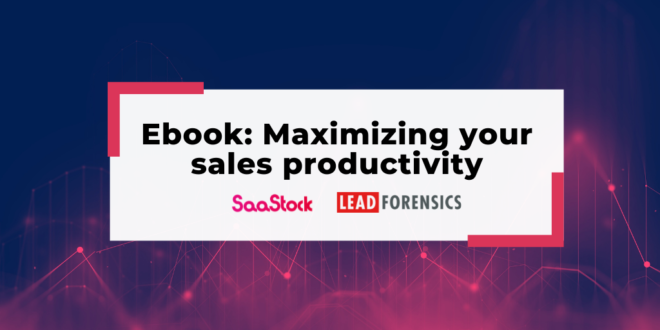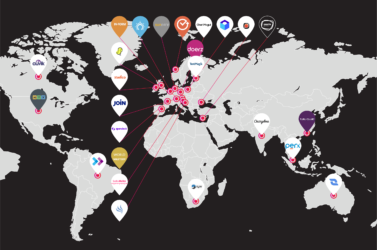This is a sponsored post by Lead Forensics.
Sales productivity is the biggest challenge for 65% of B2B organizations, and it’s not hard to see why.
B2B sales processes can be convoluted and intricate. Multi-channel marketing strategies have increased the number of touchpoints in a B2B buyer’s journey — complicating the sales funnel.
On top of all this, sales development representatives (SDRs) are busy, often juggling many time-consuming tasks that distract from revenue-generating activities. In fact, research shows that only 33% of an SDR’s time is spent actively selling.
But, every organization needs to keep its sales pipeline full and engaged. So, what can you do to uplift the productivity of your sales team? Our e-book outlines 4 key areas to consider in approaching this.
1. Establish the shortcomings in sales efficiency vs. sales effectiveness in your teams
As many as ⅔ of SDRs fail to meet their quotas. To outline new strategies to refine your sales performance, it’s beneficial to view sales efficiency and effectiveness as separate components in refining sales productivity.
As a quick breakdown:
- Sales efficiency considers what activities are being performed, often considering the speed of sales-related tasks or the time spent doing it.
- Sales effectiveness considers how these activities are being performed — assessing the quality of sales processes to ensure they have the best impact on the sales cycle.
2. Understand the current B2B buyer behaviors, alter your sales strategies to match them
B2B customers are empowered by choice. When considering their options on the market, they have access to a huge variety of options. During the consideration phase when a B2B customer is evaluating the options on the market, as many as 60% want to connect with a sales representative. If you can’t offer a solution at a decisive moment in their journey, they’ll find an alternative among your competitors.
Our e-book breaks this down, providing insight into the market solutions that enable you to align your sales strategies with your buyer’s journey.
3. Automate your sales processes
Analytics technology and high-level CRM integrations continue to be highly effective in driving sales processes. In 2020, over 60% of companies harnessing automation exceeded their revenue targets.
As we mentioned, there are many factors that harm an SDR’s productivity, many of which an SDR can’t control. One example is poor data quality which negatively impacts an SDR’s efficiency and subsequently harms the quality of SQLs, too. The right automation tools can alleviate this, also removing the human error that can harm the MQL-to-SQL processes.
Want to find out more about MQL-to-SQLs? And how to get marketing and sales more aligned? Check out this edition of SaaStock’s The SaaS Revolution Show.
4. Leverage website visitor automation
Gaining actionable insights for your sales team on your prospect’s behavior can be a tricky process. Automation, specifically website visitor automation, can uplift both your sales efficiency and effectiveness.
At the tip of the iceberg, industry-leading software as such will grant you complete visibility on the companies visiting your site, alongside the contact information of the key decision makers. This dramatically shortens the process of identifying leads, boosting the efficiency of your sales team.
Additionally, you can provide your team alerts on your lead behavior, such as their on-site behavior, referring websites, and other engagement insights. This can directly inform your SDR’s tactics, providing them everything they need to make real-time communications with prospects which have been shown to increase conversion rates by 26%.
Delve a little deeper and discover the secrets of maximizing your sales productivity with our downloadable E-Book: B2B Sales: Maximizing your sales productivity.





